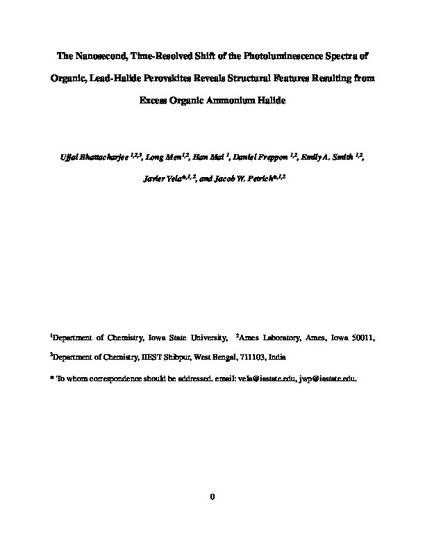
The effort to drive solution-based perovskite solar cells towards higher efficiency has been considerable, reaching over 24%. Such progress has been made possible by the low-energy barrier to crystallization. The low-energy barrier in the reverse direction, however, also renders them susceptible to dissociation from heat, moisture, and photoexcitation. Consequently, studies that provide information on the stability of perovskites are of considerable importance. It has been reported that perovskite crystals formed using different stoichiometries of the organic precursors and metal halide are equivalent. Our findings, however, suggest that the difference in reaction pathways affects the quality of the final crystal and that changes in morphology and the production of any defects can lead to differences in behavior under illumination. Here, we present photoluminescence spectra subsequent to nanosecond photoexcitation of perovskites synthesized under various conditions. Our results indicate that the presence of excess precursors (i.e., CH3NH3X, X= I and surfactant) gives rise to an ~20-nanosecond relaxation time with which the photoluminescence spectrum achieves its equilibrium value. This relaxation is absent in bulk, polycrystalline material. This is, to our knowledge, the first report of the ~20-ns relaxation time, which we attribute to cation migration. These structural changes are not detectable subsequent to photoexcitation by x-ray diffraction, nor are they detectable by in situ x-ray diffraction during photoexcitation.
Available at: http://works.bepress.com/emily-smith/64/

This document is the unedited Author’s version of a Submitted Work that was subsequently accepted for publication in the Journal of Physical Chemistry, copyright © American Chemical Society after peer review. To access the final edited and published work see DOI: 10.1021/acs.jpcc.9b07913. Posted with permission.